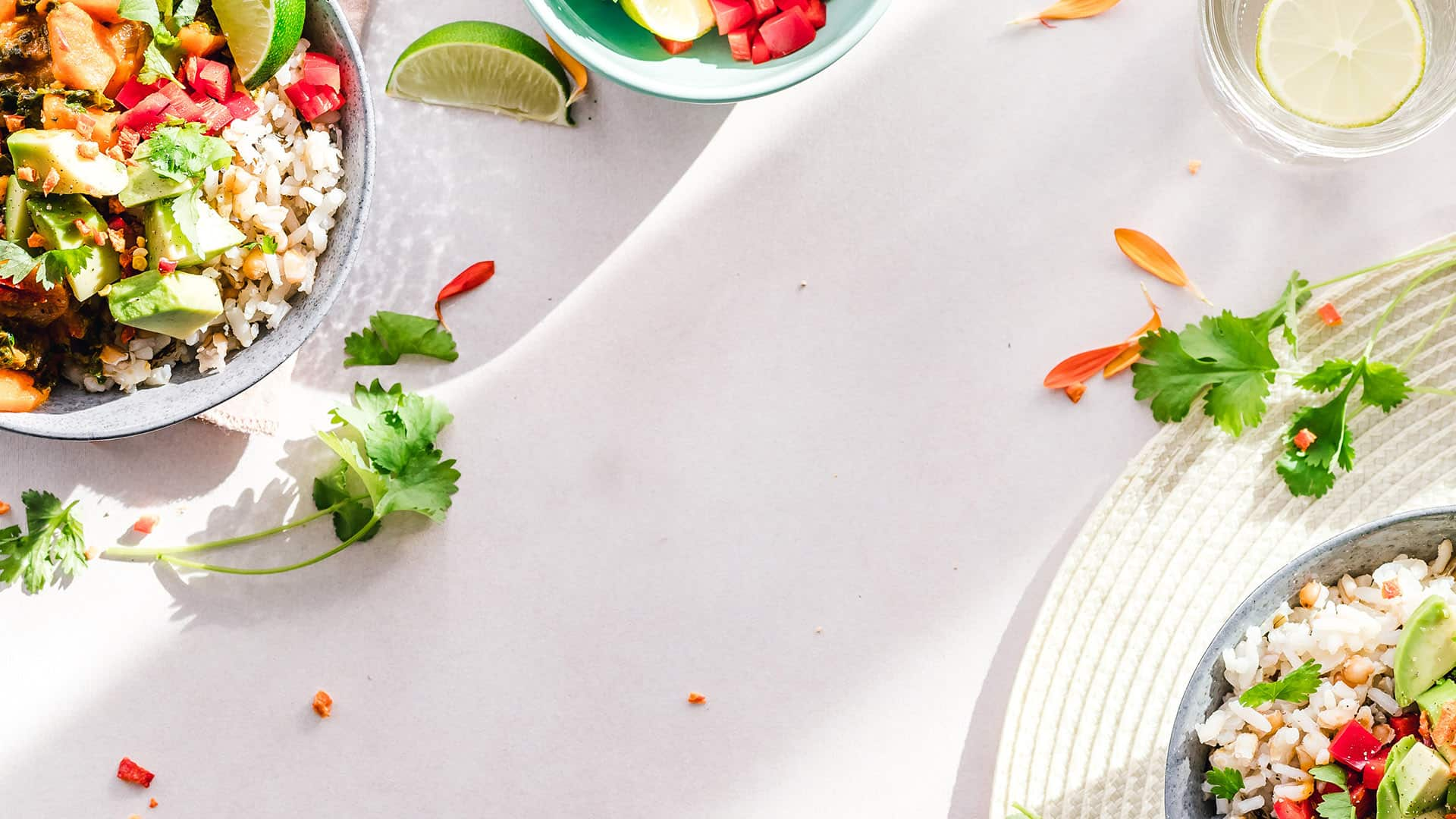

Deep Dive: Growth factors
Bringing cultivated meat to the table is challenging but right through the value chain, writes David W. Smith, innovators are doing the heavy lifting to help producers turn what was once a dream into a scalable, sustainable and cost-effective reality
Cultivated meat is mainly in the pilot stage but it has the potential to grow into a multi-billion-dollar sector within the next decade. To date, Singapore is the one country in the world where cultivated meat products can be consumed legally, albeit the USA could follow as soon as this year. Europe’s regulators have been slow out of the blocks but are likely to follow in the next few years for environmental reasons.
Humans consume enormous amounts of meat annually – around 320 million tons of it according to the Organisation for Economic Co-operation and Development – and the consequences are severe. The livestock industry uses 77% of the world’s agricultural land for grazing and animal feed production. Beef alone is responsible for around a third of global deforestation while livestock produces 14% of all greenhouse gas emissions, according to the United Nations.
Alternative forms of meat will help to resolve these issues and meet the Paris Agreement climate goals. Compared with traditional European beef, cultivated meat uses 45% less energy, according to the European Environment Agency. If produced using renewables, it emits 92% fewer greenhouse gases, uses 95% less land and 78% less water compared to animal beef.
Some may claim the progress has been slow but there is an enormous amount of innovation from start-ups in the sector. Venture capitalists have invested US$3 billion already and more money will flood in as cultivated meat moves closer to market. More technological breakthroughs are still needed, however, to improve taste and texture, and scale up processes hugely. But given the environmental pressures, it is inevitable that cultivated meat will – sooner or later – become a major part of the human diet.
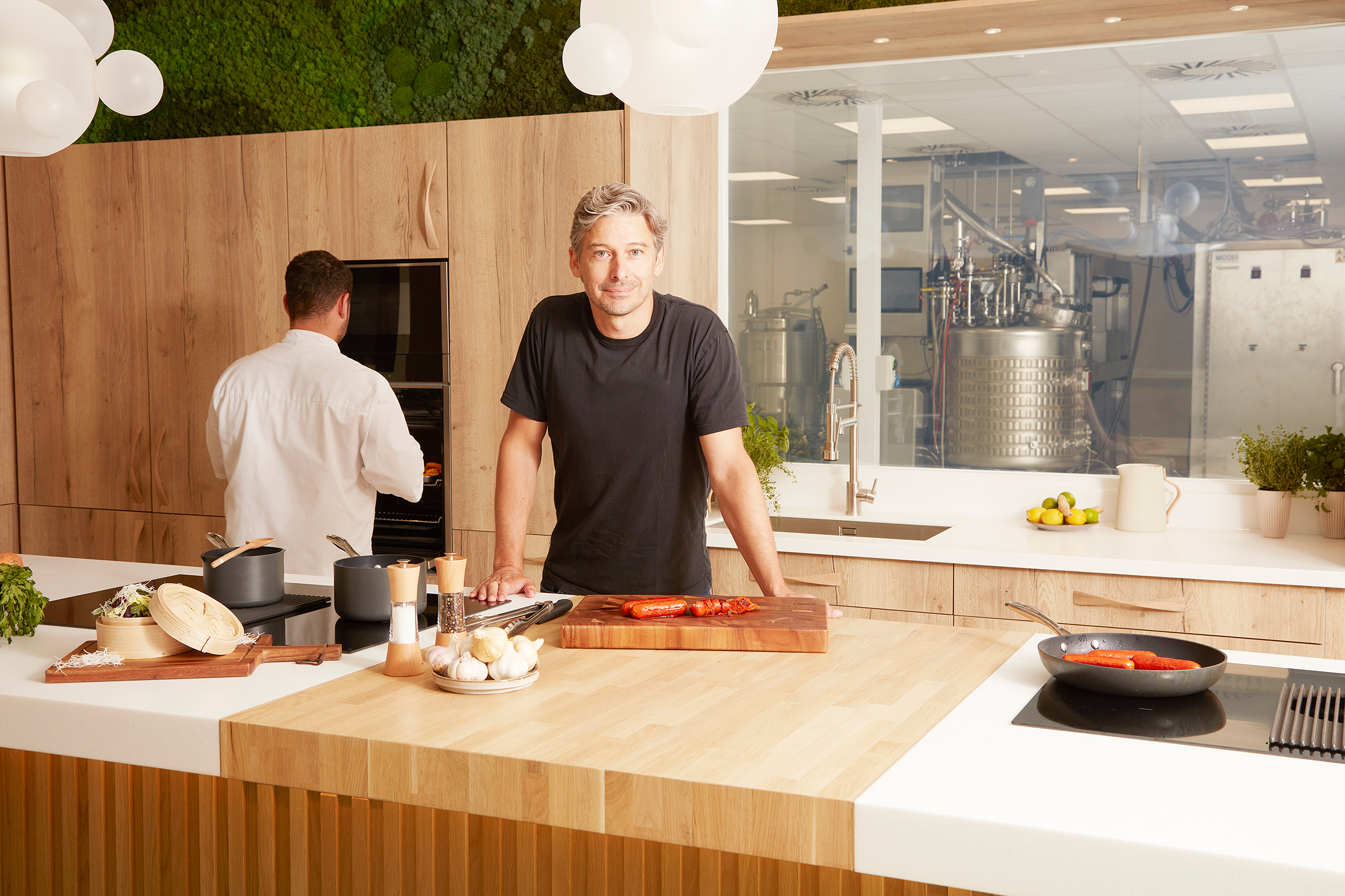
Is the UK running the risk of being left behind in the cultivated meat market?
Rich Dillon, the CEO of Oxford, UK-based cultivated meat company, Ivy Farm, believes cultivated meat will be available to buy in every supermarket aisle within a decade. Customers won’t be able to tell the difference with animal meat, he says.
“It’ll look and taste exactly the same. It will be affordable and part of consumers’ regular diets as people enjoy eating real meat, but without a side order of environmental guilt,” he explains. “We expect in 10 years, perhaps earlier, a huge ecosystem of cultivated meat products, providing healthy competition globally. Will there be a cultivated meat food giant? Considering the meat industry is a multi-billion-dollar sector, I don’t doubt it.”
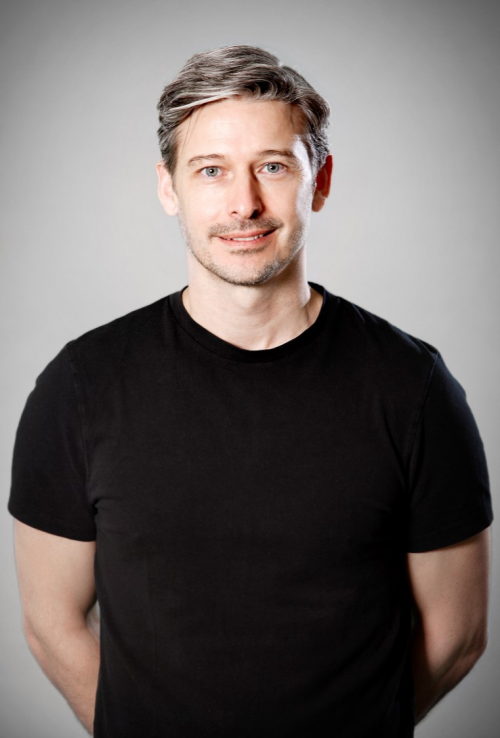
Ivy Farm’s non-GMO production process uses technology developed at Oxford University. A small number of cells are taken from an animal and placed in a bioreactor. The cells are exposed to a mix of vitamins and nutrients, so they produce meat in three to four weeks. The company was the brainchild of Russ Tucker, a former Oxford student of biomedical engineering. Tucker has a lifelong affinity with the meat industry: his father was a butcher, and he has worked in advisory roles for the UK’s largest supermarket chains.
Tucker’s ambition was to create a sustainable alternative to industrially reared meat. Ivy Farm was born in 2019 after he met Co-founder Professor Cathy Ye, Director of the Oxford Centre for Tissue Engineering and Bioprocessing.
The company raised £6.4 million (US$7.9 million) in a seed round in 2020, then £25 million (US$31 million) through a Series A funding round. “We’re now planning our Series B funding round in 2023 to support the scaling of our technology. It will help with expansion into new markets, further R&D and applying for regulatory approval,” Dillon reveals.
Significant progress has been made. In the summer of 2022, the funding allowed Ivy Farm to open the UK’s first cultivated meat production plant, in Oxford. It houses a 600-liter bioreactor that enables the production of more than 2.8 tons of cultivated meat a year and is equipped with an innovation kitchen in which food scientists and chefs work together to test recipes. Ivy Farm is now partnering with engineering company, Dennis Group, to build a 200,000-liter capacity bioreactor that could produce at least 12,000 tons of cultivated meat a year, which is roughly equivalent to 300 million hot dogs.
Consumer appetite
Dillon’s optimism about the future for cultivated meat is grounded in the company’s research about consumer attitudes. It shows two-thirds of UK respondents are ready to try cultivated meat. Meanwhile, despite great-tasting plant alternatives, sales have stalled following a rapid rise in popularity. “For meat eaters, in particular, cultivated meat offers a much easier transition – it tastes like meat, looks like meat, and possesses the same, or superior, nutritional qualities,” he says.
Some of the biggest challenges to scaling are around cost. Dillon says when cultivated meat was first unveiled to the market in 2013, it cost US$330,000 to produce one burger patty. Prices are now dropping every year as technology improves. Ivy Farm‘s goal is to serve customers with products by 2025.
It tastes like meat, looks like meat, and possesses the same, or superior, nutritional qualities
Another cost barrier is associated with the growth media used as food for the cells. This is expensive as the most common suppliers are making pharma-grade materials. “It has presented a huge challenge to the sector’s ambitions to scale quickly,” Dillon notes. “But we’re seeing significant reductions in cost by sourcing new and alternative food-grade ingredients from a range of suppliers.”
A second obstacle for the nascent industry is around regulatory approval. Dillon argues UK regulators have been slow to cash in on the nation’s regulatory freedoms outside the EU and devise a novel foods process that encourages innovations in food-tech. The government promised a year ago to make the UK’s novel food regulations more “transparent and effective”, but it has not happened yet.
“There needs to be a greater sense of urgency from the government to provide the Food Standards Agency (FSA) with the support, resources and expertise to follow through on these intentions, overhaul the regulations and optimize this opportunity,” Dillon believes. “Despite the opportunity of becoming a global leader in the space, the UK runs the risk of being left behind. This is why we’re looking at other potential launch markets, such as the USA or Singapore, where the regulatory environment will enable us to get our products to market sooner rather than later.”
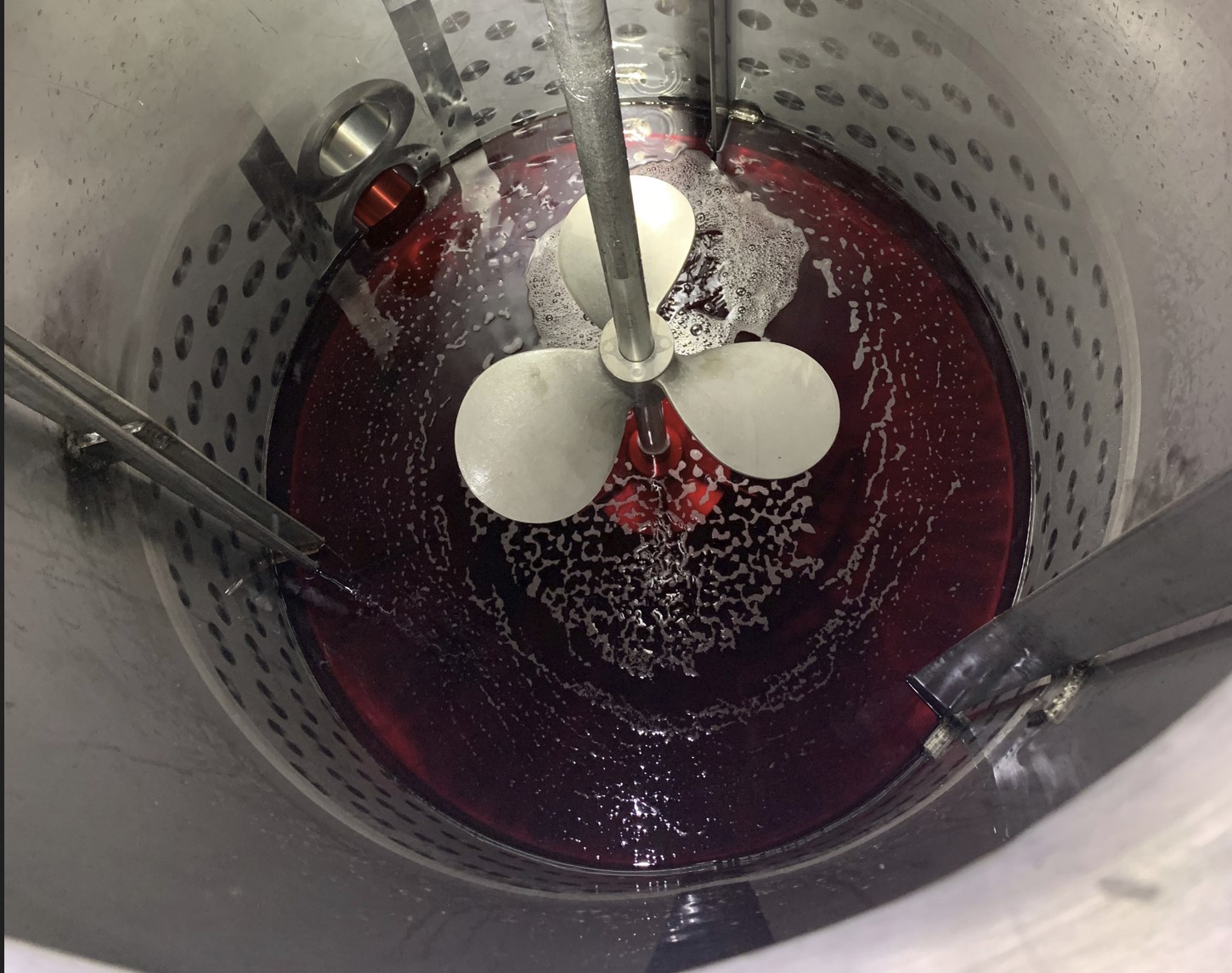
Could a poor communication strategy derail the movement?
US biotechnology startup Solar Biotech (SolarBio) – which provides bioprocessing technologies to the cultivated meat sector – has developed what the company claims is the first industrial bioprocessing plant in the world to operate sustainably. The company’s US$35 million, 55,000ft2 facility, in Virginia, is powered by solar energy, involves zero waste and is water-neutral.
Alex Berlin, CEO & CTO of SolarBio, says the facility, funded by investor money, is a milestone for the company. Although he admits to battling severe headwinds since SolarBio was founded in 2019, significant progress has been made in the past three years. “We started industrial operations in Norton, Virginia, nine days before the World Health Organization announced the Covid-19 pandemic on 2 May 2020. In addition to the pandemic, we’ve faced market volatility, inflation, shortages of talent in the USA, the war in Europe, skyrocketing utility costs and disruption of global supply chains,” Berlin reports.

“Despite all these roadblocks, our customer pool has more than tripled in the past three years and we expect revenue in 2023 to be double what it was in 2021 and to close the year ‘in the black’, independently of the looming recession.”
SolarBio has more than 70 employees with operations in Cincinnati (Ohio), Norton, and a facility in La Rochelle, France.
When Berlin founded SolarBio in 2019, his ambition was to commercialize synthetic biology (synbio) precision fermentation and cell-cultured products, including cultured meat. He says the synbio process dramatically reduces the cost of goods, the biggest challenge facing food-tech segments. At first, progress was slow because there
was little understanding of the benefits of the company‘s approach.
“The majority of all venture capital investments were directed toward upstream cell-line development, but almost none was going to scaling up and commercializing these products,” Berlin continues. “Recently the tide has turned in our favor with investments directed toward synbio infrastructure.”
There were also technical challenges to solve to establish engineering processes at scale for new synbio products. Berlin began by relying on external parties but learned “by bitter experience” it was not the best way. “After that, we vertically integrated with French engineering company, GPC Bio, which has more than 15 years’ experience designing and building biopharma and food-tech plants for large players such as Merck and Sanofi.”
Another challenge was to reduce costs for cultured media and the design of bioreactors for the growth of animal cells. SolarBio’s proprietary solutions to resolve these two issues are patent-pending. “We never stop innovating,” Berlin adds. “It is our daily ‘bread and butter’ and the only bottleneck now is capital.”
Attracting interest
In the past two years, SolarBio has started to attract more investment and raised US$9.5 million in seed funds. Investors include Ingredion and food-tech funds such as The Good Protein Fund in Singapore. Sales have picked up, too, exceeding US$10 million in revenue. SolarBio has enabled multiple synbio products that are available commercially, including ‘Hemami’, which provides umami flavors and meat aromas without animals, as well as cultured chicken meat.
People are more receptive toward food innovations providing these attributes come at a competitive price
But Berlin laments the difficulties of raising more significant sums of capital, in spite of market projections for the growth of the precision fermentation market from US$2 billion to US$36 billion by 2030. “We have several investors in due diligence but the process is slow and does not meet the timeline to rapidly ramp up sales and meet the demand in the synbio and cultured meat segments,” he says. “We remain optimistic as our team is strong and experienced. We’ll close our Series A funding in 2023.”
Ultimately, Berlin expects the cultivated meat sector to become a multi-billion-dollar industry in the next few years as middle-class Millennials and GenZ consumers continue to demand transparency, sustainability, traceability and personalization in food products.
A major risk to the mass acceptance of cultivated meat, though, is a poor communication strategy. “It could derail the movement, similarly to what we saw when GMOs were introduced when traditional meat lobbyists campaigned for the old production methods. Another hurdle remains reduction of costs, but with all the innovation, I’m certain price parity will be achieved soon – in particular in high-value meat segments.”
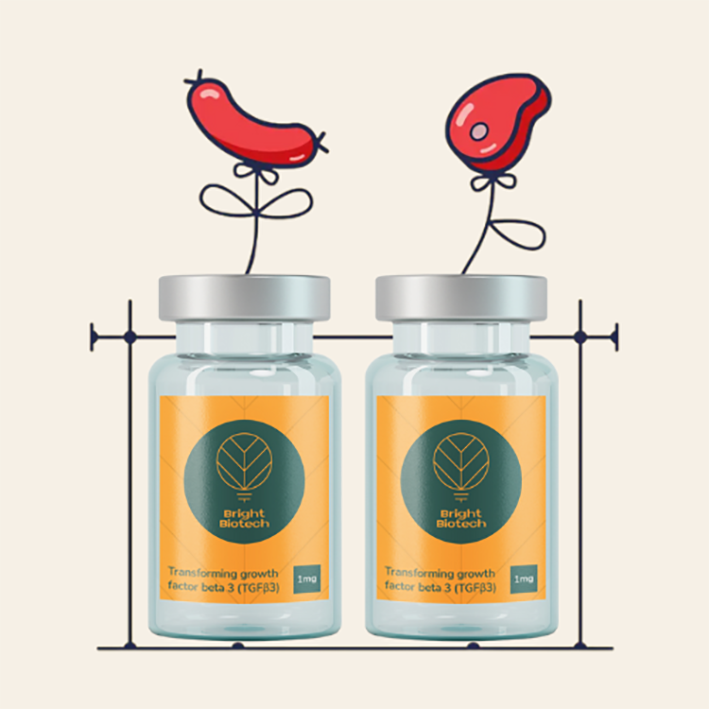
More sustainable than fermentation and with a net-zero carbon footprint
Mohammad El Hajj, CEO & Co-founder of Manchester, UK-based Bright Biotech, says animal-free feed is actively replacing Fetal Bovine Serum (FBS) as a source of growth factors to aid cell expansion and multiplication in the cultivated meat sector. The startup produces growth factors out of tobacco plant materials and El Hajj believes the technology’s time has come. He expects the first commercial products to be available to market this year.

“FBS is procured from the blood of unborn calves in the dairy and meat industries,” he explains. “It’s widely adopted in the cultivated meat industry as a nutrient-rich medium with naturally occurring growth factors but it’s being replaced today by animal component-free cell growth feed for ethical reasons and because FBS introduces a lot of variability into cell-culture systems.”
Bright Biotech’s system uses genetic engineering of the chloroplasts of plant cells to make growth factors. As the system relies on light, water and CO2 to drive expression of protein in chloroplast, it’s more sustainable than fermentation technologies and has a net-zero carbon footprint. The animal-free feed is primarily composed of amino acids, lipids, sugars, vitamins, minerals, water, and proteins to help cells thrive.
Among the proteins are the growth factors that drive cell growth and multiplication. Despite being used at low concentrations, growth factors make up at least 55% of the marginal cost of cultivated meat. They can cost several million dollars a gram, making them more expensive than diamonds! But El Hajj says using Bright Biotech’s plant-derived growth factors cuts costs significantly as expensive bioreactors are not required for the fermentation-free process. “We calculate that replacing the commercially available growth factors with our plant-made growth factors reduces media cost from US$376 to US$21.70/liter and the cost of manufacturing 1kg of cultivated meat 17-fold,” he says.
Bright Biotech was founded at the end of 2019 when El Hajj teamed up with Anil Day, his supervisor from the University of Manchester and an internationally recognized leader in chloroplast biotechnology. Former employers and business mentors, Tariq Ali and Farid Khan, who have run successful biotech companies, then joined the group. In November 2021, Bright Biotech welcomed its fifth co-founder, Rania Deranieh, who has experience in advanced molecular biology and mammalian cell culture and is helping the company to understand the technical challenges in the sector.
Setting up a business is all about identifying and delivering a technology or solution that customers and the world need but is missing in the market
The pandemic interrupted Bright Biotech’s attempts to commercialize its technology, but it sprang to life again at the beginning of 2021. Food-tech investor, Big Idea Ventures, put in US$200,000 and helped to build a business plan aimed at using the plant-derived growth factor to make large amounts of protein at low costs. Interest in the company continued to grow and in November 2022, the company closed an oversubscribed seed round after raising US$3.2 million, including contributions from CPT Capital, the FoodHack syndicate, as well as Big Idea Ventures.
Take it from me
Based on his experiences with Bright Biotech, El Hajj advises startups in the space to develop two entrepreneurial skills in particular – communication and listening. “Setting up a business is all about identifying and delivering a technology or solution that customers and the world need but is missing in the market,” he says. “The best way to know whether this need exists is to engage with your customer segment and stakeholders to validate your technology or solution.”
In less than five months, El Hajj says Bright Biotech had more than 500 meaningful conversations with cultivated meat companies, regulatory bodies, consultants, food and agritech investors, competitors, and innovation hubs across four continents. “This helped us to understand the cultivated meat industry, its current state, and the needs and challenges to be addressed to commercialize it for human consumption,” he says. “We advanced our value proposition based on what we heard and developed a business roadmap to deliver a tailored portfolio of products. This, I believe, is what led to a winning business case among investors.”

Cultivated fish: healthier, cheaper, and more sustainable
German cell and marine biologist, Dr Sebastian Rakers, co-founded Bluu Seafood, the first European company to specialize in the commercial production of cultivated fish, in 2020.
“Our vision is to make cultivated seafood the ‘normal‘ choice as it is healthier, cheaper and more sustainable than conventional seafood while delivering prime taste,” Rakers says. “I envisage a customer ordering a fish burger at a restaurant in 2035 being asked ‘Normal or slaughtered?’ Normal being cultivated.”
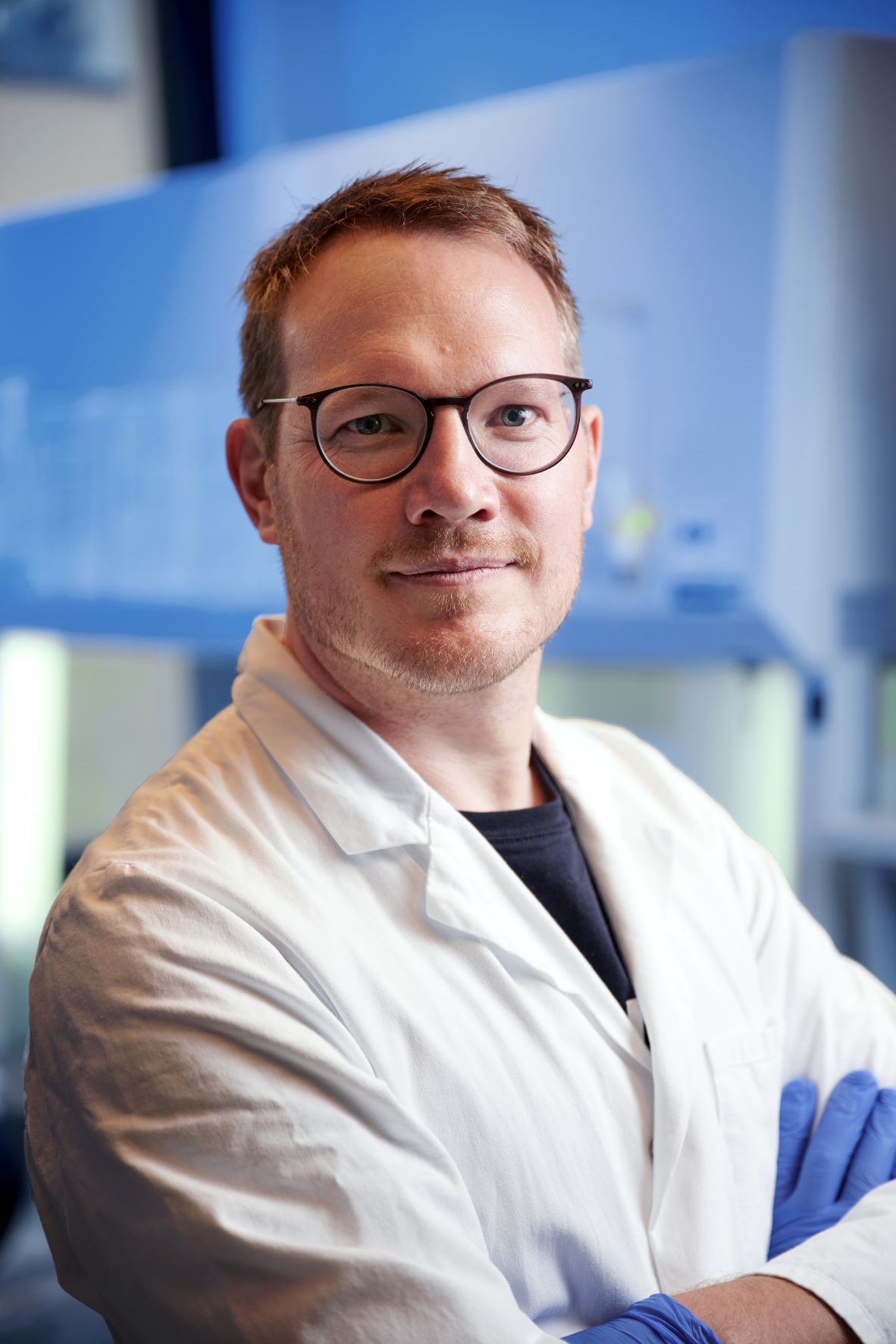
Within a decade, Rakers is confident cultivated fish will be well below cost parity and in large-scale production in Asia, Europe and the USA. He expects to market Bluu’s seafood as a B2C and B2B2C brand and is committed to building a profitable company that never loses sight of its sustainable values. “In a decade, we could see a company like Bluu becoming a cultivated seafood giant,” he predicts. “Even more realistic are corporates such as Nestlé acquiring cell ag companies like ours to broaden their portfolios.”
Rakers is passionate about preserving the ocean’s magical diversity and beauty – he loves to dive to explore the ocean depths. “When you’re underwater, you’re in a completely different habitat. I find that utterly fascinating,” he says. Actually, his passion led him to study marine biodiversity, then in 2008 join the Fraunhofer Institute, the German research organization for applied research.
After that, he led a team isolating fish cells at the Facility for Marine Biotechnology and Cell Technology in Lübeck. “It became my passion,” Rakers reveals. “Working with fish cells on various projects over 15 years has required a lot of time and patience. I almost consider them my ‘babies’.”
In 2020, fueled by his passions, he co-founded Bluu with Managing Director, Simon Fabich, an investor thinking along similar lines. Then, in April 2021, entrepreneur and molecular biologist, Dr Christian Dammann, joined as COO. At the beginning of 2021, the team raised a seed round of €7.1 million (US$7.7 million) and is finalizing Series A, which will fund pilot production at a new facility in Hamburg.
I imagine a customer ordering a fish burger at a restaurant in 2035 being asked ‘Normal or slaughtered?’ Normal being cultivated, of course
The company has built a portfolio of non-GMO immortalized cell lines focusing on trout and salmon, which can grow in suspension culture in high densities using a serum-free medium. “There are further technological nuts to crack in terms of increasing efficiency and scaling up but cultivated proteins will 100% become reality. Industrial production could come in two to five years.”
Commercial advantage?
Rakers remains unconcerned about competitors as the market opportunity is enormous and there are few rivals in the space. He sees a commercial advantage, too, in Bluu’s product portfolio. “We’re focusing on fast and cost-efficient production of ‘soul food’ products such as fish fingers and fish balls by using existing technologies such as continuous stirred tank reactors and extrusion technology, and refraining from complex scaffolds or costly microcarriers,” he reveals.
“Our products can enter markets quickly, face lower consumer expectations than, say, a tuna steak and serve a wide consumer group. More advanced cell ag companies such as JUST – with its GOOD Meat – took a similar approach, starting with chicken nuggets instead of complex fillets, steak, or chicken breast. Other cultivated seafood players aim to enter the market with complex, raw products that will be more expensive to produce, difficult to handle and harder to scale.”
Rakers expects approval of a cultivated seafood product either in Singapore or the USA in 2023. These two countries are the main targets for a first product launch as they have the fastest timelines. But Bluu remains a European company and is battling for regulatory change. On that note, Bluu co-founded industry association, Cellular Agriculture Europe, and is in regular discussions with German authorities.
“We need regulatory change, but it’s important not to move too fast and screw up,” Rakers stresses. “We mustn’t make promises we cannot fulfil and we need to present consumers with a tasty, safe product they trust. In terms of perception, we should avoid the ‘GMO-trap’, where some consumers rejected GMO because they feared negative health impacts or perceived big corporate interests behind them.”
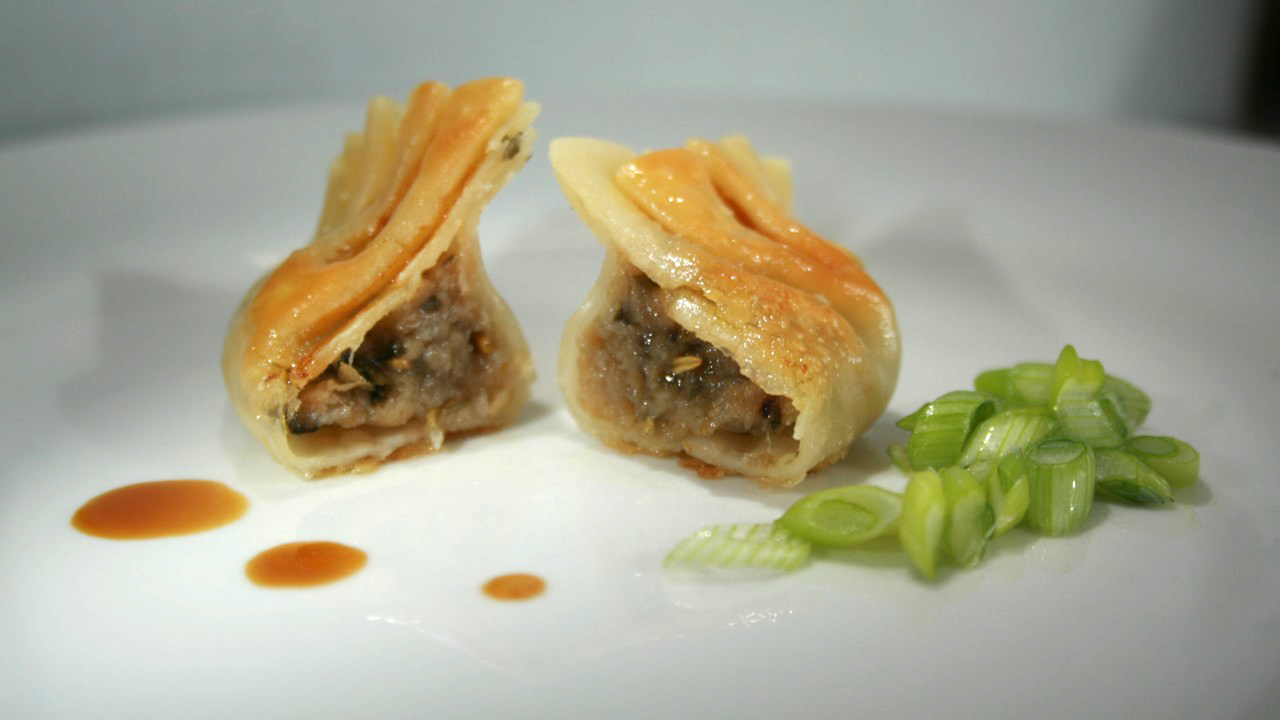
Cultivated meat players need to be in it for the long haul
Roslin Technology, an Edinburgh, Scotland-based food and agtech company, is using a similar process to the stem cell technology that cloned Dolly The Sheep in 1996 to produce cultivated meat. The company span out of Edinburgh University’s Roslin Institute, where the animal cloning process was developed. Around 90% of the company’s business is focused on cultivated meat, but it also has an insect-breeding program that will eventually separate.
“Dolly was created using stem-cell technology and we’re using a similar process 27 years later to produce something novel, but much less controversial,” explains Roslin Tech’s CEO, Ernst van Orsouw. “Our unique capability is to make stem cells out of an animal’s somatic cells. We take the cells from a biopsy and reprogram them to become pluripotent, meaning they can self-renew forever and differentiate into any tissue, fat or muscle, similar to an embryonic stem cell. They’re also genetically stable.”
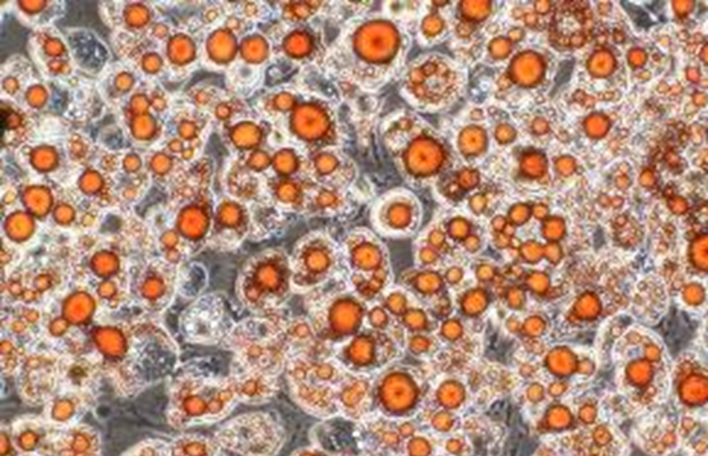
The cells double every day: after 63 days there‘s enough to fill a swimming pool! They are then frozen and sent out to lab-grown meat companies worldwide. And regulatory approval is not needed to commercialize the cells either. “It’s ideal for the cultivated meat sector,” notes Van Orsouw. “From a couple of cells, you can multiply them millions and millions of times and make tons and tons of meat.”
Roslin Tech was founded in 2017 as a joint venture between the University of Edinburgh and two private investment firms. At the end of 2022, the company closed its £11 million (US$13.6 million) Series A capital raise, which was led by life sciences investor, Novo Holdings. The funding will allow Roslin Tech to expand its cell-line portfolio and further develop the protocols for scaling up its cells into cost-competitive cell biomass for meat.
Other investors include Kairos Capital Group, Nutreco, Future Planet Capital, Esco Lifesciences, Alchimia, and private investors. This adds to funding received in 2021-2022 from Scottish Enterprise and existing shareholders, including the University of Edinburgh’s VC fund, Old College Capital, and Future Planet Capital’s BIF Opportunities.
Strategic decisions
When deciding what strategy to adopt, Roslin Tech pursued a B2B model and began commercializing the cells immediately rather than waiting several years to perfect the process. “We opted to work collaboratively with customers and other industry parties to make ourselves continuously better every year,” continues Van Orsouw. “Today, we already ship cells to customers in North America, Europe, Asia and the Middle East.”
To supply 1% of the global meat demand today, we’d need to invest about US$200 billion in facilities to produce it, so that’s more than 60 times as much as has been invested to date
Roslin Tech has concentrated mainly on pork lines but has begun to develop lamb cells. “From the pork cells, we see companies we sell to focusing on structured meats to build, for example, meat products such as steaks and sausages. We’re also developing hybrid products, mixing cell-based components together with plant-based ones to add flavor. Using analytics, we can modify the amino-acid profiles to change taste and texture. We can even try new combinations and ratios and maybe create a better experience than animal meat.”
Although Van Orsouw has confidence in the future of the cultivated meat industry, he suspects it could take decades before it makes up a significant proportion of global meat consumption. Investment is the key driver, he believes, and to date about US$3 billion has been injected by venture capitalists. This should rise, he reasons, as the sector moves closer to market. But vastly more capital is required to scale up. “To supply 1% of the global meat demand today, we’d need to invest about US$200 billion in facilities to produce it, so that’s more than 60 times as much as has been invested to date,” he suggests.
Van Orsouw estimates that cultivated meat could reach a 1% market share by the end of the decade but after that, he thinks it will take two, possibly even three decades before it significantly replaces the animal meat supply. “I think it’s a fairly gradual process – not something that switches overnight. And that’s good, because it will give us time to get the consumers along on the journey.”
.jpg)
A unique 3D porous structure that enhances cell proliferation and differentiation
Cultivated meat would be just ‘mush’ without scalable scaffolds to provide texture and body, and they tend to be expensive to develop. But an Estonian startup has patented a novel method to resolve the problem using cost-effective nanofibrous scaffolds. Gelatex Technologies produces the material in rolls, and claims it is 90% cheaper than current nanofibrous materials. It can be used to create scaffolds for cultured meat, as well as other industries such as tissue engineering.
“Our uniqueness relies on proprietary nanofiber production technology called ‘halospinning‘,” reveals Mari-Ann Meigo Fonseca, Co-founder. “This technology enables cost-effective, high-speed production of materials that have a unique 3D porous structure, which enhances cell proliferation and differentiation. Our materials help to create the right texture for the cultivated meat, so it has the same sensory characteristics as animal meat.”
.jpg)
Gelatex’s halospun scaffolds are based on mainstream plant proteins that makes them more cost-efficient and scalable than electrospun and hydrogel alternatives, Fonseca says, with their 3D porous structure promoting enhanced cell adhesion and superior diffusion rates of oxygen and nutrients. “We’re seeing again and again that the cells feel at home with our scaffolds and the nanostructure compensates for what we lack in natural cell attachment positions because we’re using only plant-based ingredients. In most cases, the cell adhesion rate is around 80%.”
Gelatex was founded in 2016 by materials scientist andengineer, Märt-Erik Martens and Fonseca, whose background was in textiles, manufacturing and business consulting. Their original business idea was quite different. They intended to make leather-like textiles using nanofibers of gelatin to take advantage of the abundant waste from the meat industry. “We wanted to make five hides from the same cow, while also providing a material that was chemically identical to leather, comes in rolls, and is easier to use in mass-production.”
Change for good
The dynamic duo changed strategy in 2020 after a professor at the University of Tartu used their process for liver cancer drug research. It made them realize it could be used to produce materials that were ideal for industrial tissue engineering. “It had two features that are essential for cultured meat,” Fonseca reveals. “It can provide materials with a structure the cells love and also bring down costs, vital in an industry where scaling up is important. We fell in love with the idea of cultured meat as a more environmentally friendly and sustainable way of producing meat with no waste. We decided to pivot to develop nanofibrous scaffolds and microcarriers for tissue engineering and cell-culture applications, with cultured meat receiving the majority of our focus.”
Our materials help to create the right texture for the cultivated meat, so it has the same
sensory characteristics as animal meat
The company has received €2.5 million in funding so far with equity investment contributing €1.4 million through companies such as Techstars, Change Ventures and Crosslight Partners. The other €1.1 million has come from non-equity competitions or grants. “We are relatively satisfied with funding so far and not having more resources has forced us to be more ingenious,” Fonseca feels.
One challenge in the field is that companies are using a large variety of different cell lines, or growth media, which all impact the final result. “There’s no golden standard, which means we have to be creative and flexible in developing our materials. We need to have many different protein platforms available to suit a variety of applications and we’re constantly evaluating new plant proteins to enrich our scaffold portfolio.”
Gelatex‘s ultimate aim is to become a large materials technology company enabling many efficient products that make life more sustainable and healthier, including cultivated meat, wound care, cosmetics, pharma and filtration. Within a decade, Fonseca expects to be supplying materials and licensing the technology worldwide. “The cultivated meat industry is likely to still be niche, but it will likely be in restaurants and high-end supermarkets in many developed countries and known worldwide,” she concludes.
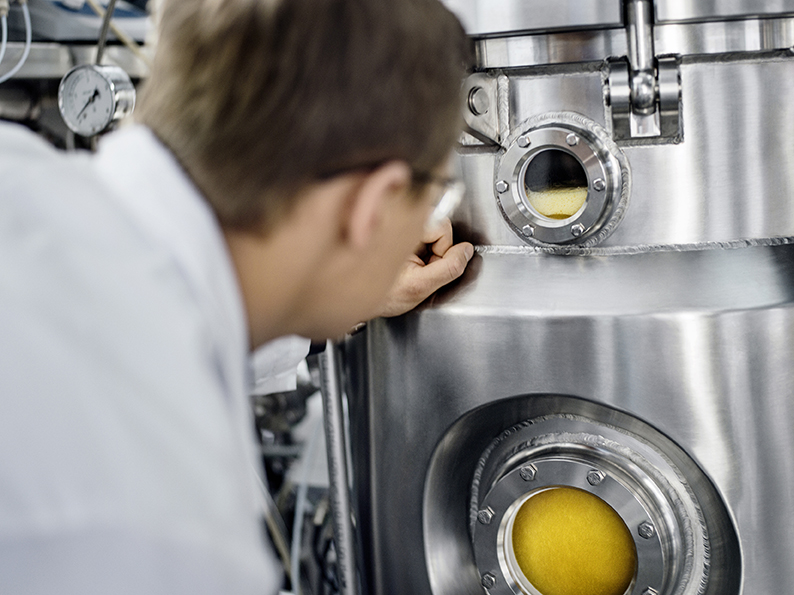
Creating sustainable meat out of thin air
A company in Finland is using a unique bioprocess to conjure protein out of thin air and create an endless stream of edible food. Solar Foods takes a single microbe, one of a billion found in nature, and makes it grow by fermenting it. Instead of watering the microbe like a plant, the company feeds it with electricity and the main ingredients captured from air – carbon, hydrogen, oxygen and nitrogen.
The resulting high-protein powder known as ‘Solein’ is nutritionally close to meat and can be used as an ingredient in the growth media used to make cultivated meat. The yellow powder contains all nine essential amino acids. It is around 65-70% protein, 5-8% fat, 10-15% dietary fiber and 3-5% minerals. The nutritional composition is quite similar to dried soy, or algae. It also provides iron, fiber and B vitamins.
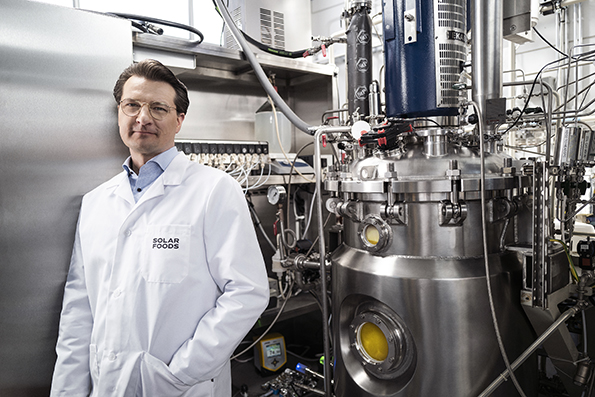
“Our technology is different to many of the processes used for cultivated meat that rely on growing living mammalian cells,” reveals Pasi Vainikka, CEO & Co-founder of Solar Foods. “Ours is an energy-conversion process. We use solar electricity as our ingredient feed-stock and we convert that electricity to primary calories like crops in the field. If the cultivated meat industry scales up big time, it will need a lot of feed for the cellular factories, and we will provide a sustainable source.”
To make its product suitable for cultivated meat, Solar Foods is conducting R&D on how best to post-process the cells and proteins to create a feed-stock for the growth media in which cultivated meat stem cells are growing, Vainikka says.
Solar Foods was founded in 2018 as a spin-out company from Finland’s National Research Institute. Vainikka believes it is a great example of what can be achieved at the intersection of various scientific disciplines, including energy systems research and bioprocess engineering.
“Our philosophy from the outset was to develop cells as factories, or manufacturing units,” he says. “There was no single breakthrough that led to our success. It was the equivalent of hitting 14 home runs in a row.”
Stratospheric growth
In the early days, the primary driver was venture capital investment from the private sector, although the government contributed smaller sums. As a result of the company’s growth and increasing credibility, it was awarded a €34 million (US$36.9 million) funding grant at the end of 2022, which was the largest-ever public grant for cellular agriculture anywhere in the world.
There was no single breakthrough that led to our success. It was the equivalent of hitting 14 home runs in a row
The grant was the first batch of funding for Solar Foods as a consequence of its recent IPCEI (Important Project of Common European Interest) designation. In September 2022, it was selected to be a part of the European Commission’s strategic hydrogen economy core. Solar Foods’ €600 million (US$651 million) investment program was notified as a hydrogen IPCEI project with a maximum state aid of €110 million (US$119 million).
“Without the venture capital funding, we would never have attracted the state funding from Finland, or the EC, which came five years into our developments,” Vainikka states. “We just wouldn’t have had enough credibility if we hadn’t been in a position to propose significant factory scaling investments. As we’re investing in a €40 million (US$43.4 million) production facility, we then start to be of interest to the EC, and became eligible.”
The new factory will open by the end of 2023 close to Helsinki Airport. It will contain an experience hub where anyone can come and see the production and taste the food. At the back will be a large production hall. “It allows us to scale up to industrial levels. Scaling is one of the biggest issues facing the cultivated meat sector. It’s not been solved yet, or there’d already be a factory producing cultivated meat at scale with reasonable production costs,” Vainikka maintains. “The sector will really begin to thrive once it can scale up and resolve some technical issues, which I don’t see happening in the next 12 to 24 months, but in the longer term.”
If you have any questions or would like to get in touch with us, please email info@futureofproteinproduction.com







